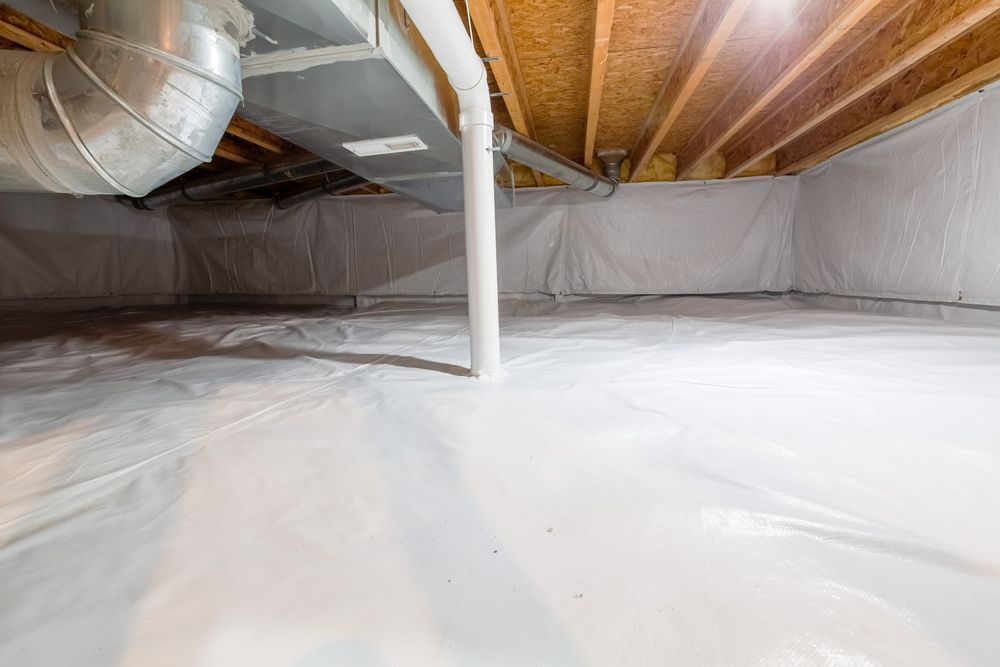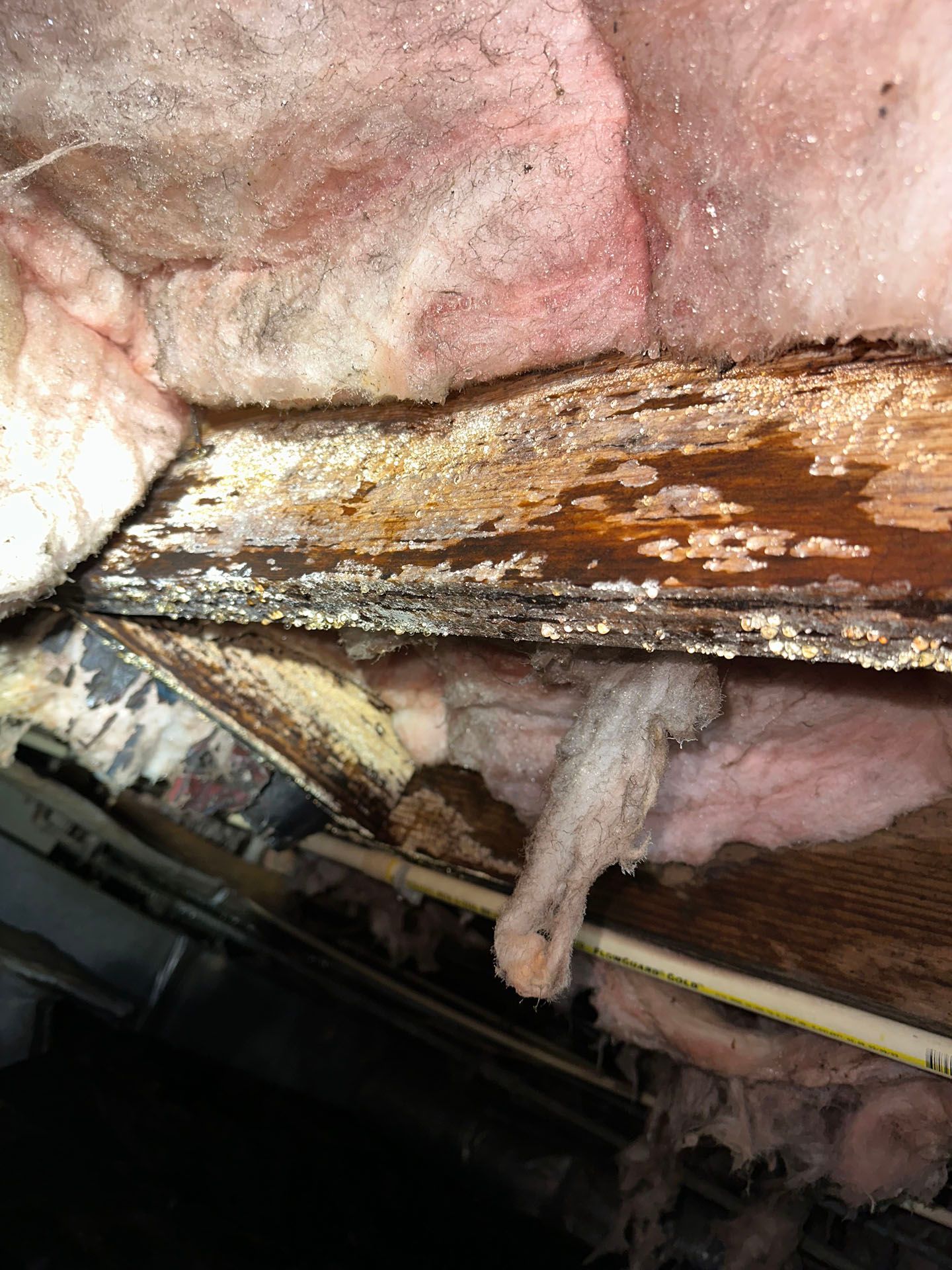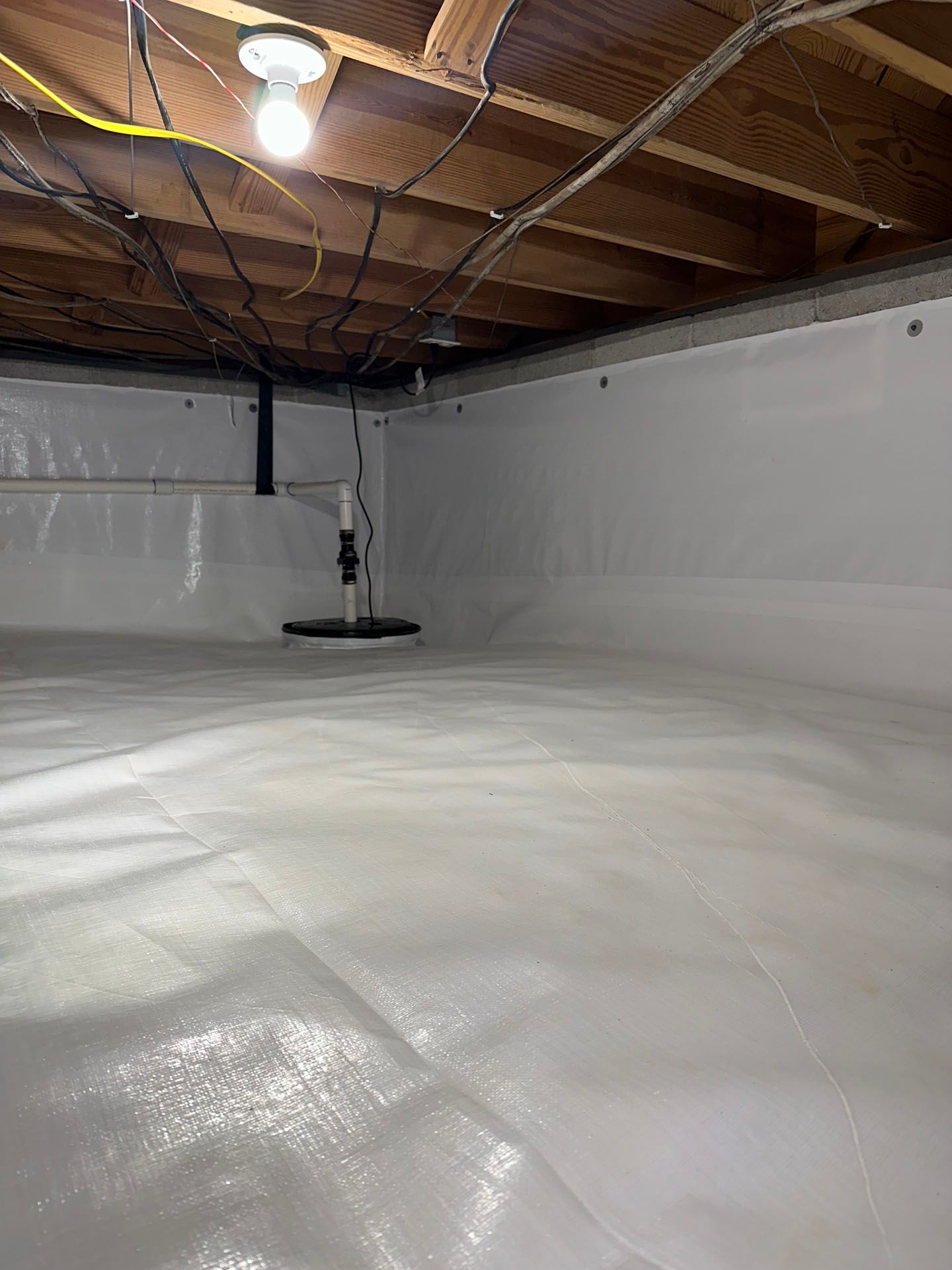Huntsville, Alabama

Claim Your FREE Crawl Space Inspection Today!
Sawyer Williams: 256-727-4422
Schedule Your Free estimate!
No-Obligation, Free Inspections
No-Obligation Free Estimates
We Warranty All of Our Work
100% Satisfaction Guaranteed
Crawl space encapsulation has been the buzzword lately for people looking to keep their living space comfortable year-round. But is this process a wise investment, or will it eventually backfire? In this post, we'll weigh the pros and cons of crawl space encapsulation to help you decide if it's the right choice for your home. We'll discuss topics such as water damage, insulation, and energy efficiency so that you can make an informed decision and evaluate the value of this service. Ready to dive in and learn more? Let's get to the facts!
Quick Response to Key Question
In most cases, crawl space encapsulation can provide significant benefits to the home. However, it is important to consider the specific environment and potential risks before deciding if crawl space encapsulation is the best option for you.
What is Crawl Space Encapsulation?
Crawl space encapsulation is a process of sealing off all the air and moisture between the home’s lower level and the dirt beneath it. This can be accomplished by insulating all exposed surfaces with materials such as polyethylene sheets, applying a sealant to all bracing and framing, installing a vapor barrier to control humidity, and adding a dehumidifier to further reduce dampness. The benefit of doing this is twofold: it reduces the amount of moisture that can accumulate in the crawlspace and improves air circulation. It can also help to improve energy efficiency by removing hot or cold spots from your home’s interior.
The decision of whether or not to encapsulate your crawl space is a personal one and has both pros and cons. On one hand, encapsulating your crawlspace helps to protect your home from potentially mold-causing moisture, and can also offer some energy savings thanks to improved insulation. On the other hand, it can be an expensive process depending on the size of the area being sealed off, and could even hinder future plumbing or electrical work if not done properly.
Overall, determining whether or not crawl space encapsulation is right for you depends heavily on your unique situation and budget. With that said, let’s take a closer look at this question by exploring whether or not crawl space encapsulation is bad in our next section.
Is Crawl Space Encapsulation Bad?
Crawl space encapsulation is the process of completely sealing off the crawl space from outside elements including air and moisture. While this practice can serve many benefits, there are numerous potential problems associated with it as well.
On the one hand, crawl space encapsulation can help to reduce humidity levels in the home by preventing moisture from entering the area, leading to fewer mold and mildew infestations. It also makes it much easier to access and maintain any indoor plumbing or mechanical systems located in the crawl space. Furthermore, a properly insulated and sealed crawl space can result in lower energy bills due to improved air flow within the structure.
However, encapsulating a crawl space can also create some adverse consequences for homeowners. For example, it can trap undesirable odors in the area, making them harder to eliminate. Additionally, sealing off a crawl space may actually hinder its ability to properly ventilate. This could lead to a buildup of volatile organic compounds (VOCs) and other airborne pollutants that could be hazardous to one’s health.
In addition, since gross floor area cannot be used for living purposes when sealed, an encapsulated crawlspace could have an unfavorable effect on home value if buyers consider it to be unusable space. It should also be taken into consideration that an improperly installed liner could tear or shift over time and allow moisture back into the area, ultimately creating more issues than it solves.
Overall, given these pros and cons for crawlspace encapsulation, it is clear that homeowners must weigh their options carefully before moving forward with this undertaking. Considering all the potential implications is necessary when deciding if encapuslation is right type of remodeling project for your particular home environment.
With all this said about whether or not crawlspace encapsulation is bad, we now move on to discuss structural damage and how it relates to proper or improper encapsulation techniques.
Structural Damage and Encapsulation
Crawl space encapsulation can be damaging to the structural integrity of a home if not done correctly. Without proper drainage, moisture can become trapped inside the home which raises humidity levels, leads to rot and also supports mold growth. The presence of moisture degrades wooden components and weakens the overall foundation of a house over time. Also, not properly sealing off vents can lead to a buildup of water vapor trapped in the floor joists and throughout the walls of a home. This can cause wood dry rot and weaken framing components, leading to potentially dangerous structural damage in the long run.
On the other hand, a home that has been effectively sealed off with appropriate drainage mechanisms installed will have no problems with moisture build-up or structural damage. In this case, encapsulation is beneficial as it protects against termites and other types of pests as well as reducing mold growth. Additionally, because insulation is often part of this process, energy efficiency is improved and costs are lower for cooling during warm months and heating during cold months.
Overall, encapsulation may bring benefits such as pest control and reduced energy bills; however, it is important to consider its potential effects on the structural integrity of a home before making any decisions. If done properly by an experienced professional with appropriate drainage systems in place as part of the installation process, no damage should occur and homeowners can rest assured knowing their crawl space will remain free from water invasion and pests.
The next section will focus on potential health risks associated with crawl space encapsulation - namely potential concerns regarding respiratory conditions caused by airborne allergens within an encapsulated crawl space environment.
Potential Health Risk Associated with Encapsulation
Potential Health Risks Associated with Encapsulation
The risks of crawl space encapsulation may not be immediately evident, but there are some potential health hazards to consider. Depending on the type of encapsulation system in place, there may be a risk of mold growth or structural damage due to moisture build-up. Without proper ventilation, this can lead to poor air quality and toxic fumes. In addition, if the crawl space is sealed off too tightly, it can trap in radon gas which has been linked to lung cancer.
While there are potential health risks associated with crawl space encapsulation, it is important to note that it also provides significant benefits in terms of energy efficiency and controlling indoor air quality. Once the crawl space is properly ventilated and insulated, the number of mould spores and other pollutants should decrease significantly. Additionally, by keeping out moisture and reducing the levels of radon gas, encapsulation can create a healthier living environment for you and your family.
Therefore, the potential health risks associated with crawl space encapsulation must be weighed against the possible benefits. When done correctly with appropriate ventilation, this type of insulation can provide both energy savings and improved air quality without compromising safety.
In conclusion, while there are some potential health risks associated with crawl space encapsulation, they can easily be minimized through careful planning and professional installation. The next section will discuss some potential solutions for reducing moisture and improving indoor air quality in your crawl space.
- A 2013 study found that crawl space encapsulation can reduce indoor moisture levels by up to 76%.
- According to a 2017 report, adding a vapor barrier to a crawl space can reduce airborne mold spores in the home by up to 95%.
- An article published in 2014 revealed that encapsulating a crawl space can reduce heating and cooling costs by up to 30%.
Potential Solutions to Crawl Space Moisture
The most common solution for controlling moisture in a crawl space is encapsulation. Encapsulation involves sealing the floor and walls with a thick, durable plastic liner and adding ventilation systems to help control the level of humidity. The plastic helps keep out any moisture that would otherwise be trapped in the crawl space, while the ventilation systems help control humidity levels. While this is a potentially effective solution for controlling moisture levels, it does not address other sources of moisture such as leaks from plumbing or condensation from ductwork.
Other solutions for addressing moisture in a crawl space relevant to your specific space may include improving ventilation, repairing leaky plumbing, adding dehumidification systems, or installing waterproofing or drainage systems. Improving ventilation will help reduce humidity and provide fresh outdoor air, while repairing any leaks can help prevent water infiltration into the space. Dehumidifying systems are designed to absorb moisture from within the air and may be necessary to reduce high levels of humidity when ventilation alone is insufficient. Additionally, waterproofing or drainage systems can be used to divert water away from the structure and prevent water damage caused by flooding or heavy rain events.
These potential solutions must be tailored to each individual home's needs, as there are numerous factors that can contribute to excessive moisture levels in a crawl space such as climate, building materials, soil type, and others. Depending on your specific situation, you may need one or more of these solutions to make sure your crawl space remains dry and healthy.
With so many potential solutions for controlling moisture in a crawl space, understanding which is best for your unique situation requires an experienced professional. To ensure your crawl space remains healthy and safe for years to come, it’s important to consult with an expert who can develop a customized plan that meets all of your needs. With proper maintenance and management, you can successfully minimize moisture levels in your crawl space and protect against further damage.
Having discussed potential solutions for controlling moisture in a crawl space, now we'll move on to discussing how to control humidity. Controlling humidity is the key to maintaining a healthy environment free of dangerous mold spores that can create health risks for you and your family.
Controlling Humidity
Humidity control is a key factor of crawl space encapsulation, and should be taken into consideration when evaluating the pros and cons. Crawl space encapsulation helps to reduce the amount of moisture in the air below your home, preventing it from entering into living spaces and leading to potential mold growth. As an added bonus, a dryer environment will also reduce pest and insect infestations.
On the other hand, not every homeowner feels comfortable investing in crawl space encapsulation to combat humidity issues. This method is often considered expensive and can require a substantial financial investment on top of regular maintenance. Some argue that allowing more air circulation could help with moisture control without requiring encapsulation. Additionally, high-efficiency dehumidifiers can often do just as good of a job reducing humidity levels without the financial commitment associated with full-scale encapsulation.
Having said that, controlling humidity through crawl space encapsulation remains an effective option for many homeowners experiencing moisture problems under their homes. Sealing spaces and installing insulation materials can help create an impermeable surface for water vapor, as well as restrict airflow that could bring in further moisture from outside. In either case, it’s important to carefully weigh the pros and cons before making a decision about how to reduce humidity in your basement or crawlspace.
The next section will discuss how sealing spaces and installing insulation materials are important steps during crawl space encapsulation.
Sealing Spaces and Installing Insulation Materials
Sealing spaces and installing insulation materials can have a major impact on energy efficiency, air quality, and moisture levels and should be seriously considered when deciding if crawl space encapsulation is a good investment. Sealing off the crawlspace from the outside environment, or simply protecting it from outside air intrusion, means all air in the area must pass through an air filter before entering the home. This type of filter is known as an “air scrubber” and is designed to remove any pollutants or allergens which can harm indoor air quality.
Also, insulating the crawl space walls and floor with foam boards help to further improve energy efficiency by acting as buffer zones between the hot outdoor temperatures and cool indoor temperatures of your home. The use of air filtration systems, insulated foam boards, and sealing off all cracks and crevices in the crawl space will help regulate temperature throughout your entire home.
However, some experts worry that completely sealing off crawl spaces might do more harm than good. For example, some are concerned about trapping moisture in crawl spaces that doesn't have sufficient drainage systems or ventilation methods in place. Moisture buildup within sealed-off crawl spaces could lead to mold growth and significant amounts of water damage over time. Furthermore, there are potential issues with trapping carbon dioxide in unventilated sealed-off areas that could become hazardous over time.
Though these potential problems should not be ignored, they do not mean that sealing spaces and installing insulation materials is necessarily bad either -- rather, proper precautions must be taken when attempting to seal a crawl space to ensure all relevant risks are mitigated. With that said, proper ventialtion is key for making sure crawl spaces remain safe environments regardless of whether or not they are sealed and insulated. That's why the next section will discuss why crawl spaces need proper ventilation for ensuring long-term safety and sustainability.
Why Crawl Spaces Need Proper Ventilation
Ventilation is an important part of any crawl space, whether it's encapsulated or not. Ensuring proper ventilation allows for air exchange between the interior and exterior of the home. This helps prevent humidity from building up, as well as reducing moisture that could lead to mold growth. Proper ventilation also helps remove odors and other airborne contaminants, helping to keep the home more comfortable and healthy.
There are two main schools of thought when it comes to crawl space ventilation. The first is that it should be adequately vented, with vents placed on both sides of the house to ensure enough air circulation to keep the humid air out. The second is that crawl spaces should be sealed off completely and no ventilation necessary at all.
Proponents of adequate ventilation argue that a properly vented crawl space can reduce energy bills, since conditioned air won't escape through unsealed doors or windows. They also note that vents help regulate the temperature in the crawl space by bringing in cooler air when it's hot outside and trapping warmer air when temperatures drop. Additionally, they point out that well-ventilated crawl spaces allow for easier detection of pest infestations, since pests like moist and humid environments.
On the other hand, those who advocate for no ventilation believe that more closed-off crawl spaces are healthier for occupants of the home due to reduced humidity levels and decreased presence of mold spores and other allergens caused by moisture build-up in a ventilated crawl space. Proponents for this method also suggest that airflow can transfer pollutants from outside through vents into the home, leading to indoor air quality issues.
Ultimately, whether you choose to use ventilation or not depends on your individual circumstances and preferences. Either way, understanding the pros and cons of each approach can help ensure you make an informed decision about how best to ventilate your crawl space.
In light of this discussion about ventilation in crawl spaces, our next section will explore the pros and cons of encapsulation as a solution for dealing with dampness or water seepage in such areas beneath your house.
Pros and Cons of Encapsulation
The concept of crawl space encapsulation is one that falls within a gray area for many. While the process of sealing off the area and preventing moisture from entering does seem to offer benefits, there are also potential drawbacks that should be taken into consideration before taking any action. To better understand the pros and cons of crawl space encapsulation, let’s take a closer look.
Pros:
One of the primary advantages is that encapsulating a crawl space creates an improved indoor air quality (IAQ). The insulation and vapor barrier provided helps to reduce mold growth, offensive odors, and other allergic reactions that can originate in an improperly sealed away crawlspace. This benefit makes it especially ideal for those living with allergies or asthma as it keeps pollen and other irritants away from the home’s interior.
In addition, having a sealed off crawl space can lower energy costs throughout the year. Encapsulating stops cold air from entering during the winter months and keeps heat trapped more efficiently inside during summers. This regulation evens out temperature changes making it easier to maintain comfortable temperatures using less energy.
Cons:
The downside to this type of project is that it cannot be completed alone. It takes skill to ensure proper installation of a vapor barrier and ensure vapor retardants are properly sealed inside. Doing it incorrectly can result in additional costs due to damages or mistakes from improper installation techniques. In this case, it’s often best to enlist an experienced professional who specializes in this type of service to ensure the job is done correctly. Additionally, trying to complete the job oneself can lead to safety hazards or possible code violations in some areas which could result in penalties or fines.
Conclusion
When considering whether or not to encapsulate a crawl space, the main thing to keep in mind is whether it will be beneficial for the homeowner in the long run. Encapsulation can provide a healthier and more comfortable environment, protect against water and moisture damage, and save on energy costs. However, when not properly done, it could lead to more problems than it solves.
It is important to research what kind of products should be used, hiring a professional to do the job correctly, and ensuring proper ventilation of the area in order to prevent mold and mildew buildup. It is also essential that existing structural issues are addressed before encapsulation, such as repairing any cracks or leaks in the foundation, sealing off vents and installing insulation.
Ultimately, doing a thorough assessment of your crawl space's current conditions and understanding the pros and cons of encapsulation can help determine if this type of project is worth investing in for your home.
Top Summary Points
Encapsulation of a crawl space can provide benefits such as healthier air, protection from water and moisture damage, and lower energy costs; however, it can also lead to problems if not done properly. Researching the proper materials, hiring a professional to install them, ensuring correct ventilation, and addressing existing issues such as foundation cracks or leaks is essential to achieving successful encapsulation. Doing assessmnet of the crawl space's conditions is necessary before investing in encapsulation.
Most Common Questions
How much does crawl space encapsulation usually cost?
The cost of crawl space encapsulation can vary significantly depending on the size and complexity of the job. Generally, costs can range anywhere from $7,000 to $15,000 for an average-sized basement. Factors such as geographic location, difficulty of access, and number of piers or water legs in the crawl space can all contribute to higher costs. However, with proper maintenance and the right materials, this investment may be well worth the money in terms of improved home comfort and energy efficiency.
Are there any alternatives to crawl space encapsulation?
Yes, there are alternatives to crawl space encapsulation. These alternatives usually involve sealing the vents to prevent moisture and pests from entering, using a vapor barrier or using a dehumidifier to keep the air dry in the crawl space.
Sealing the vents will prevent outside air from entering the crawl space, along with moisture and pests. This can be done by covering the vents with properly fitted materials such as aluminum screening or insulating foam.
Using a vapor barrier is an effective way to protect the interior of the crawl space from excessive moisture while also creating an energy-efficient environment within. Vapor barriers are typically made of plastic-like material and installed up against the floor walls of the crawl space.
A dehumidifier can be used to keep moist air (air containing over 50% relative humidity) out of your crawl space while at the same time, it helps to maintain better indoor air quality throughout your home. It will also reduce energy costs related to heating and cooling in your home by keeping indoor temperatures more consistent.
What are the potential benefits and drawbacks of crawl space encapsulation?
The potential benefits and drawbacks of crawl space encapsulation depend on the individual situation. While crawl space encapsulation can keep out moisture, pests, mold, and rot, and create a healthier indoor environment overall, it also comes with some potential downsides.
Benefits:
• Encapsulated crawl spaces reduce the moisture level in the house and help protect against structural damage and mold growth associated with high humidity levels.
• The air in the home will be cleaner since it won’t be contaminated by allergens, dust mites and other pollutants entering from the crawl space.
• A sealed crawl space protects against intruders such as animals or insects.
• Installing insulation and sealing up cracks in a crawl space helps to maintain more consistent temperatures throughout the house.
Drawbacks:
• Crawl space encapsulation can be an expensive project to undertake, so it might not be feasible for certain budgets or homes.
• It requires regular maintenance such as checking for moisture levels, which may not always be convenient for homeowners.
• In certain cases, waterproofing solutions used for crawling causes musty smells which may be unpleasant if left unchecked.
• In extreme cases of flooding or water problems, a drainage system may need to be installed and maintained in order to prevent further damage.

Written by Sawyer Williams
Precision Crawlspace & Renovations
Sawyer has specialized in crawl space and foundation repairs for over six years. As the founder of Precision Crawlspace and Renovations, he is one of Huntsville's top experts in crawlspace moisture control. He has prior experience installing these systems, which has prepared him to solve complex problems related to crawl space encapsulation, mold remediation, and waterproofing.
Recent Blog Posts
Huntsville's Crawl Space News



What are you waiting for?
We Solve Crawl Space Issues!
Get reliable crawl space repair services at an affordable price, provided with the high level of service you deserve.
Call Us Today at: 256-727-4422
All Rights Reserved | Precision Crawlspace & Renovations

